Not all mushrooms are created equal
A lot of us have the wrong impression. We trek in the forest or walk through open fields and figure mushrooms grow easily and everywhere. But no. Mushrooms are incredibly finicky little things. They’re susceptible to every small variation in temperature, airflow, humidity, and they’re easily contaminated. Growing them is part art, part science. Growing them well, is an act of passion and dedication.
Meet Mike, owner-operator of Carleton Mushroom in Osgoode, Ontario.
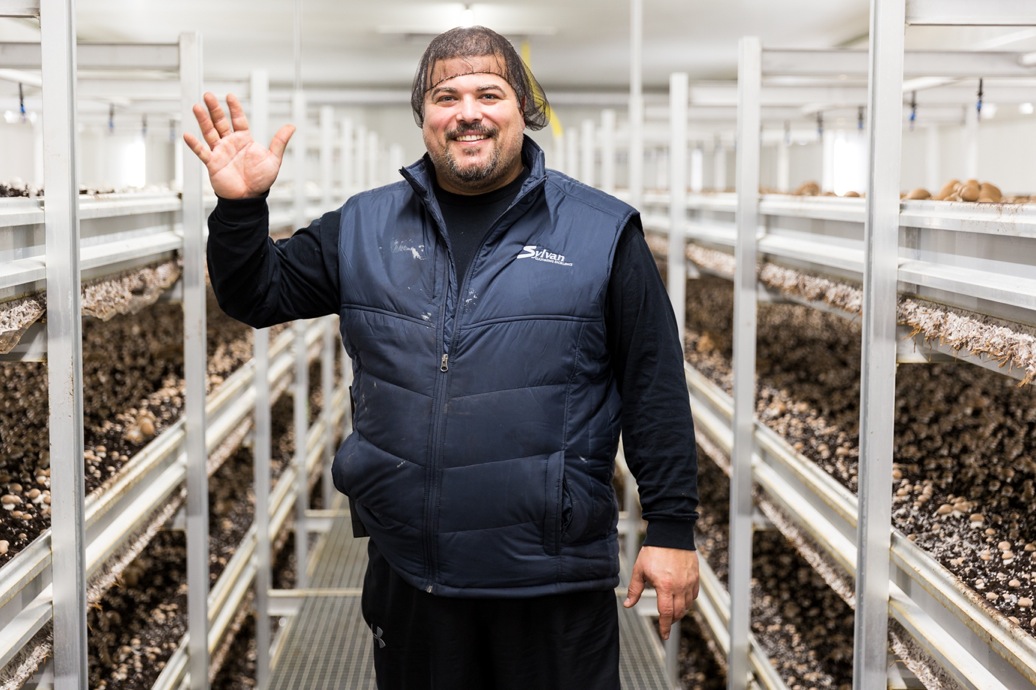
Mike is the second generation of mushrooms growers in the Medeiros family. His father started the business in 1984, and Mike got an early start. He was just five years old when he started making cardboard lids for mushroom delivery boxes. A lot of kids would see this as a chore and whine, Mike just caught the mushroom bug.
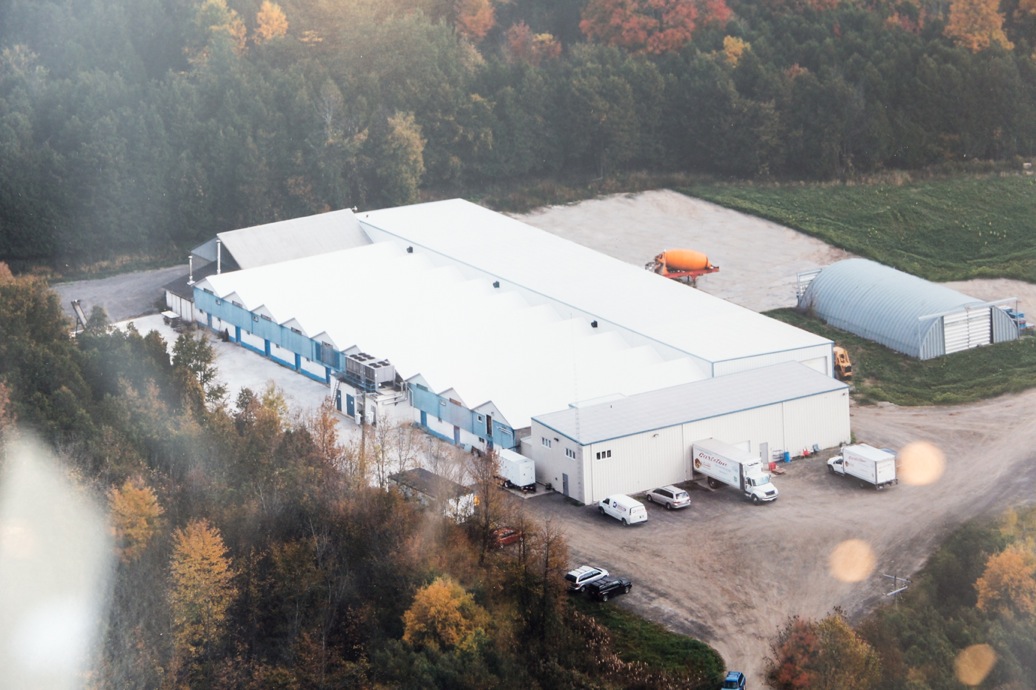
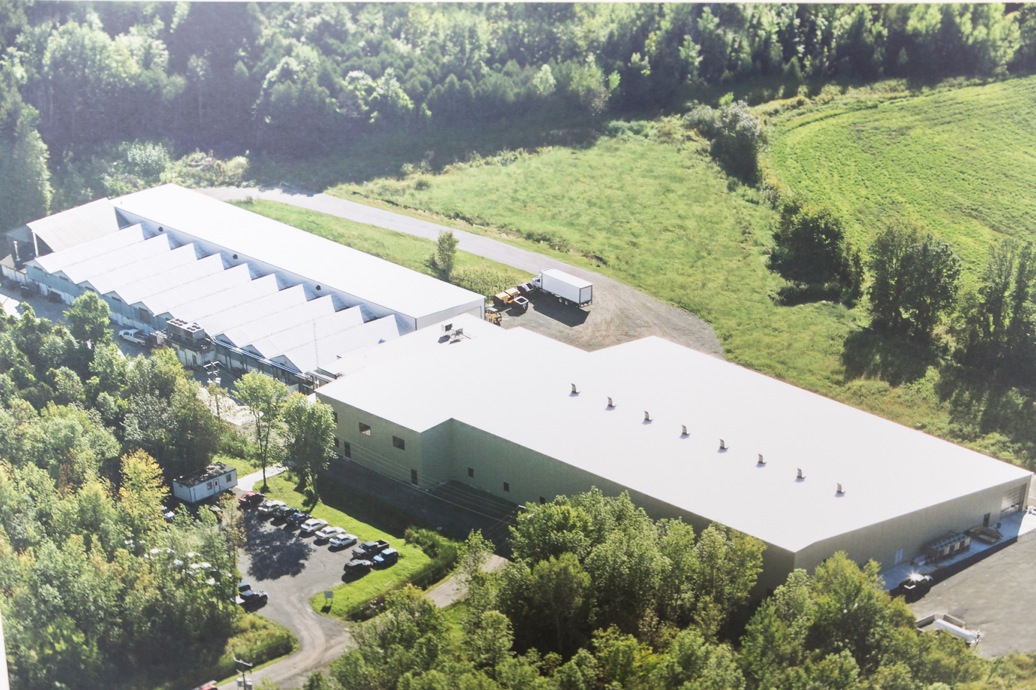
The company started out with nine grow rooms, 15 years later they added one more and a packing area. In the past three years, 17 more grow rooms were built, 11 more are planned for the summer of 2017, and they’re currently refurbishing the original 1984 facility. In the past three years, Mike’s team grew from 30 to 110 employees!
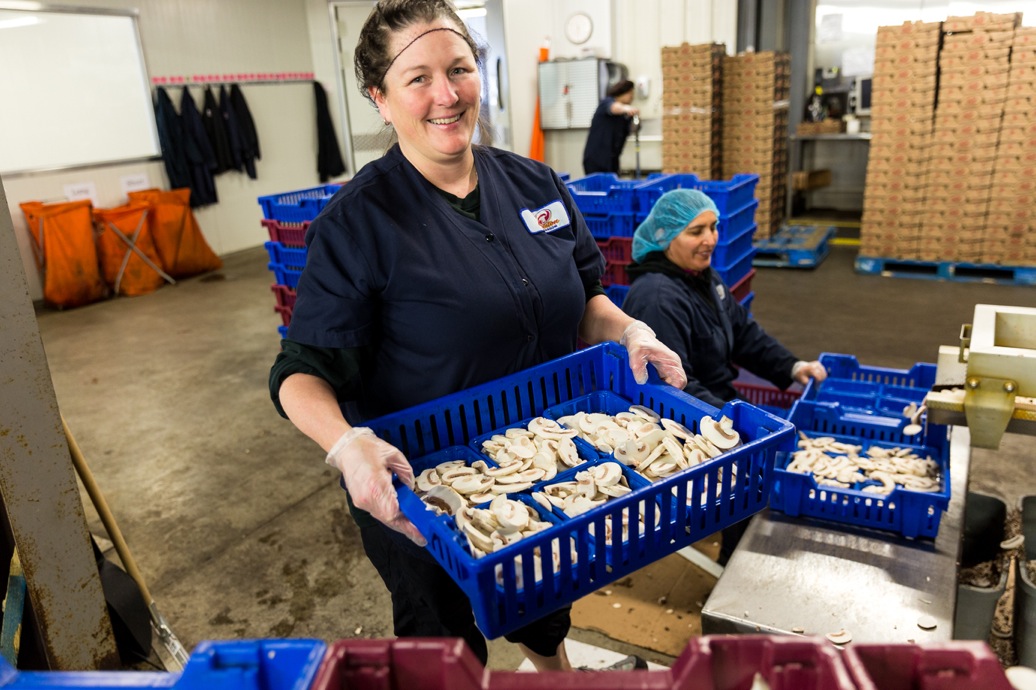
The first thing you notice when you walk into the place is how incredibly clean everything is. You could eat off the floor. That brings us back to the finicky nature of the mushroom. Before a mushroom can grow, everything, and we mean everything, needs to be sterilized.
Certified Organic Compost = Certified Organic Mushrooms.
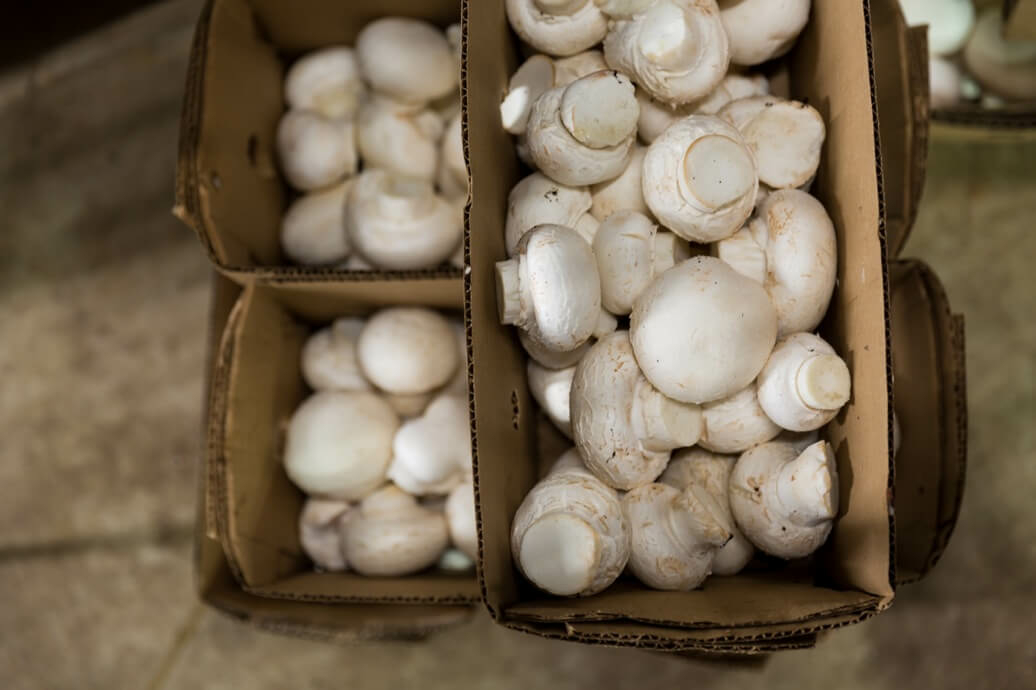
To truly control the quality of his mushrooms, Mike needed to ensure that everything was absolutely perfect every step of the way. But like plants, mushrooms depend on their growing medium: compost. It’s the microbes that develop during decomposition that feed the mushrooms.
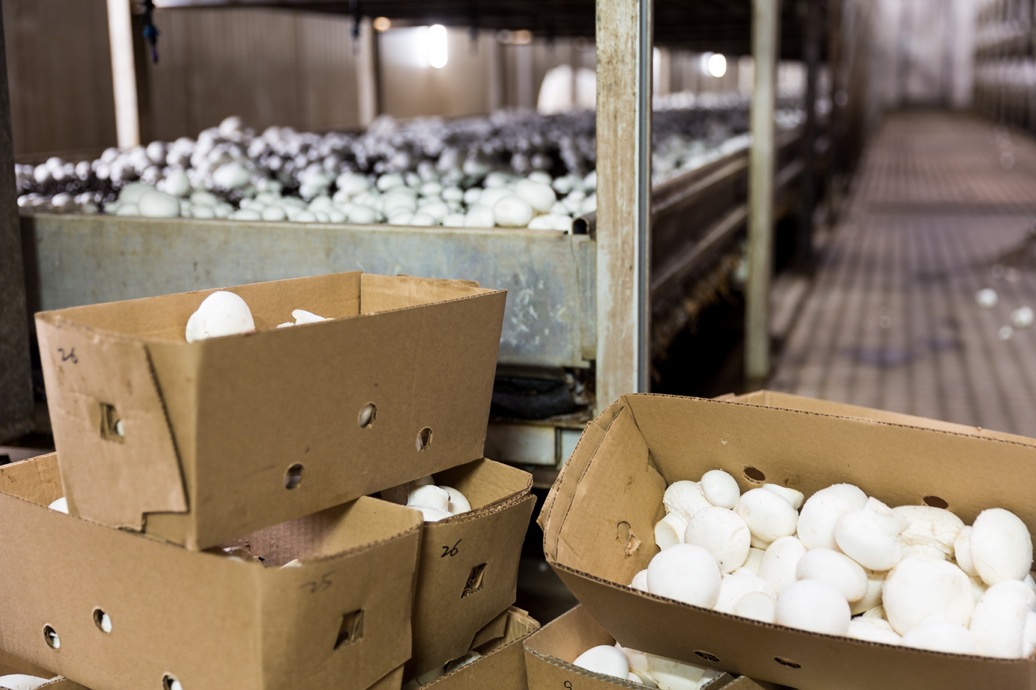
“If your compost is of poor quality or contaminated, your mushrooms won’t grow or they’ll go bad.”
So Mike got together with some other owners and they built their own composting plant in Ashburn, Ontario, which produces thousands of tons of compost each week.
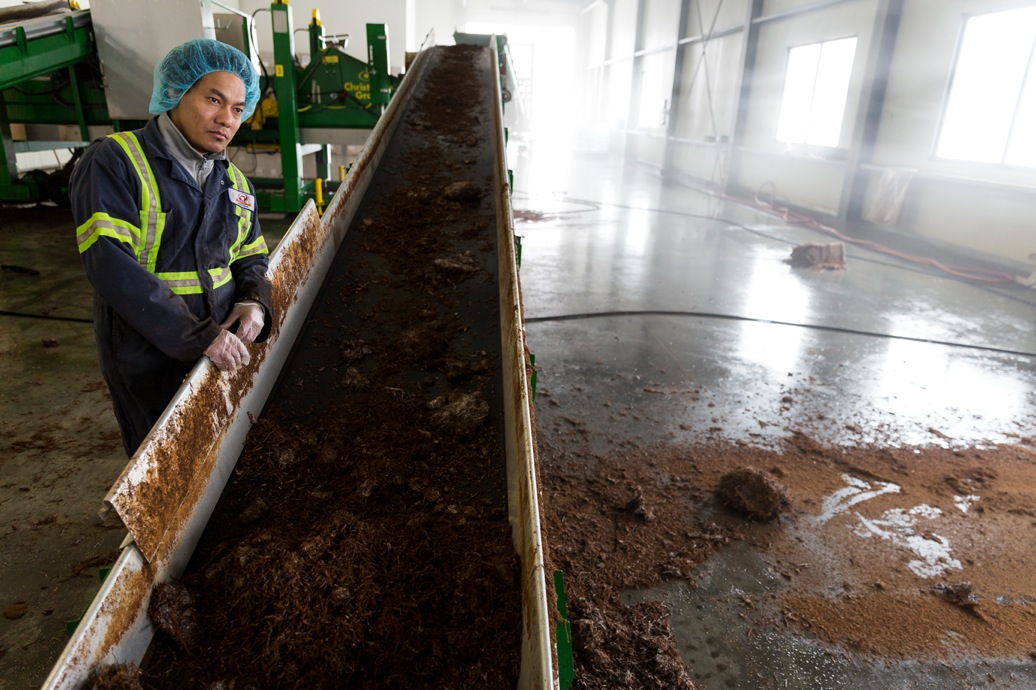
“It costs a little more to be organic. And it costs for the certification. So farmers who aren’t organic, it’s cheaper for them. It’s an added cost for us, but we believe in food, and we believe in what we eat … we feel better having a product that’s 100% organic.”
To maintain their organic certification, the compost has to be organic. That means that every ingredient going into it has to be certified. The recipe? 25% hay, 75% straw, plus a bit of poultry manure for nitrogen, shredded corn cob for carbohydrates, and a bit of gypsum to bring up the pH levels. This is the ideal mix for the the three varieties Mike grows: white, brown, and portobello.
After that, the compost is sterilized for five days before being seeded with mycelium and brought to the farm.
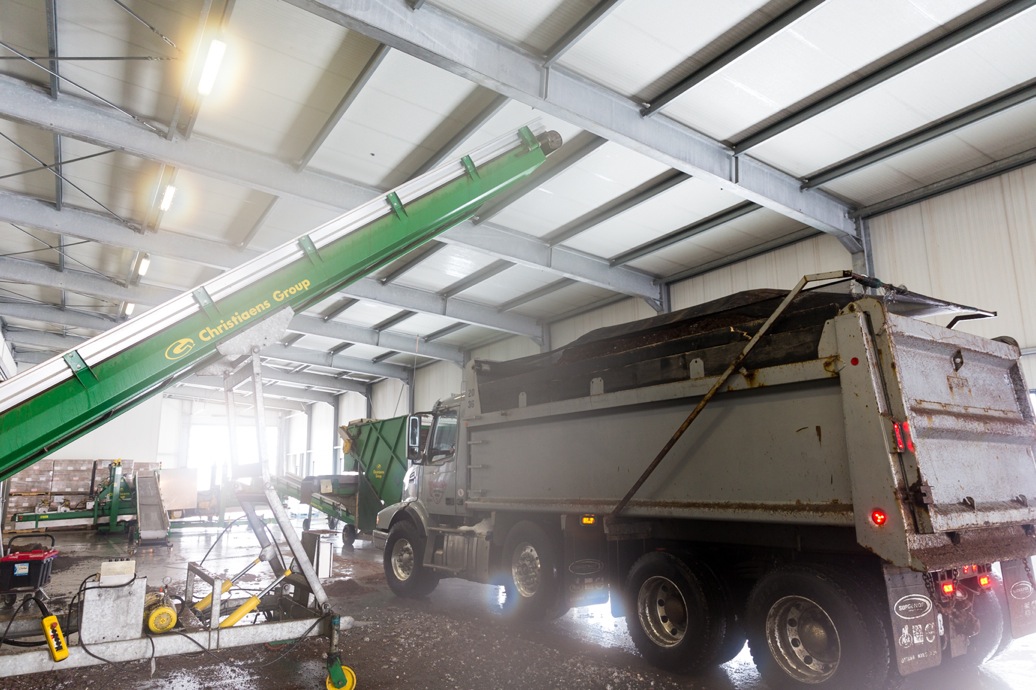
More than just organic...eco and sustainable too.
One of the reasons we like these guys so much is that they use other people’s waste products and byproducts (hay, straw, poultry manure) to create healthy new life.
Their state of the art composting facility is all indoors and has an air cleaning system, with ammonia scrubbers and bio filters, unique in North America at the moment. This means that no smell is sent into the environment.
Mushrooms give off heat as they grow (actually the compost does as it decomposes), bringing heating costs down, but they try to save energy just the same by double-insulating all their roofs, sealing every grow room, and making sure they have the latest, best, most energy-efficient equipment.
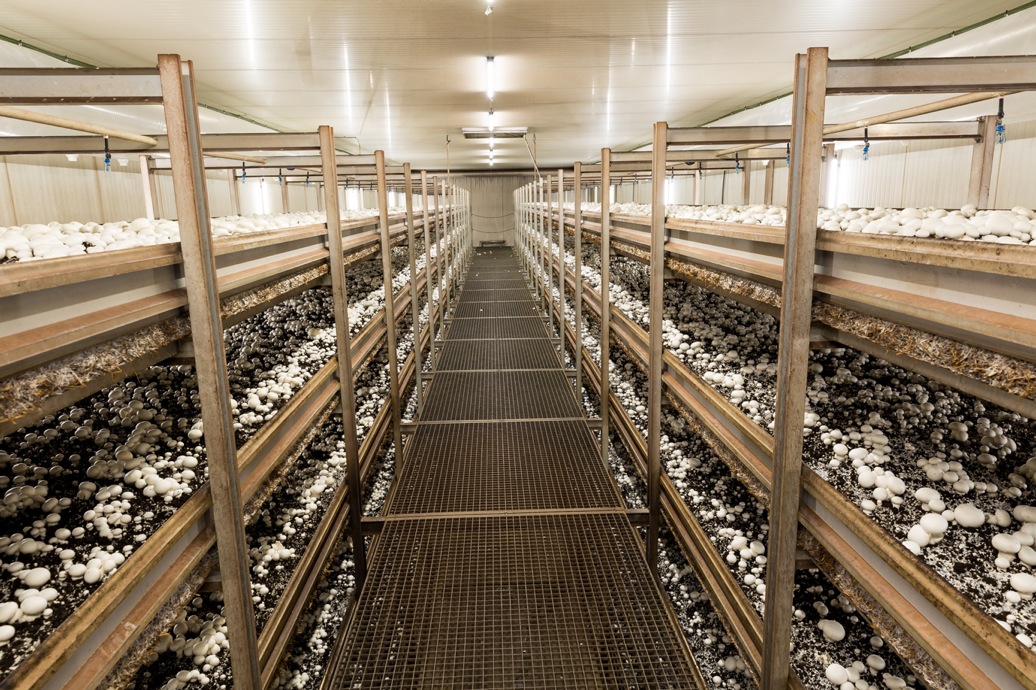
And all their own waste and byproducts - the compost from their empty grow beds and all their mushroom stems - is reused by someone else and sold as mushrooms compost for gardens.
Reduce, reuse, recycle, indeed.
Plants grow from seeds. What about mushrooms?
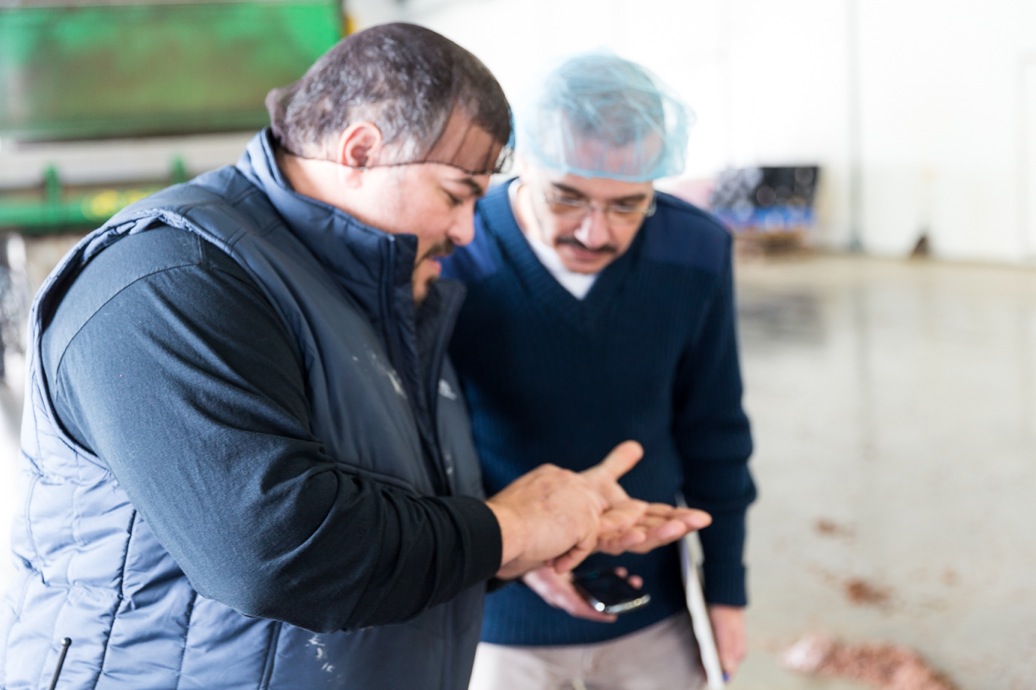
Mushrooms have no seeds, they have spores. These are used in a laboratory to grow the mushroom spawn on a sterilized grain of millet or rye. That’s what’s used to seed the compost.
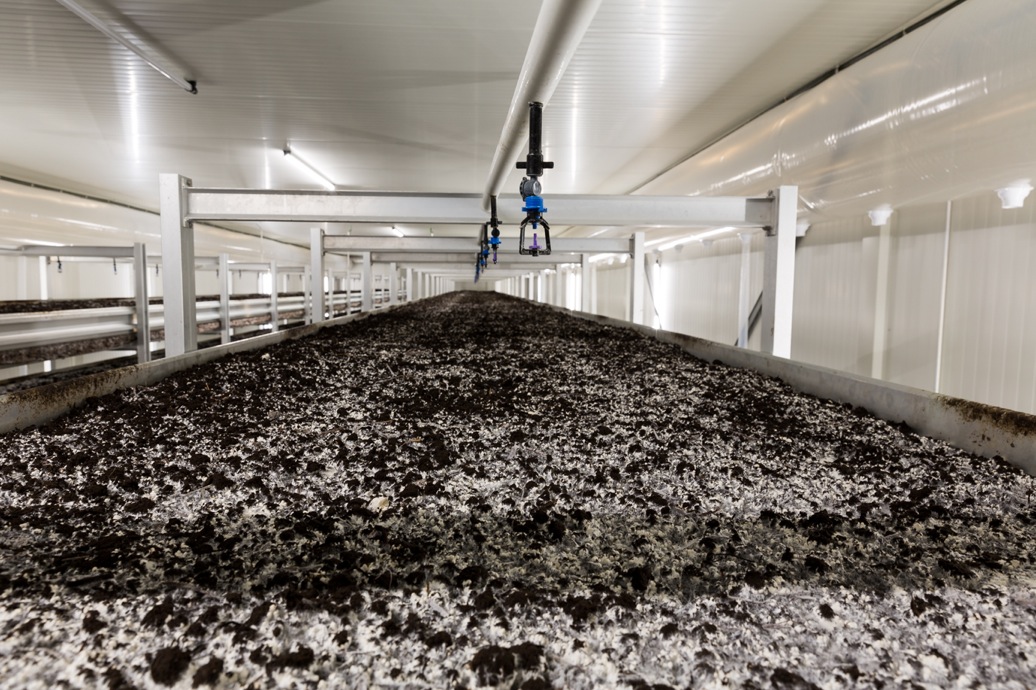
Two weeks after seeding, the compost is taken to the facility, laid down on the growing beds and the mycelium (a filamentous white substance from which the mushrooms emerge) completely takes over. The compost goes from brown to white as snow with mycelium in six to seven days.
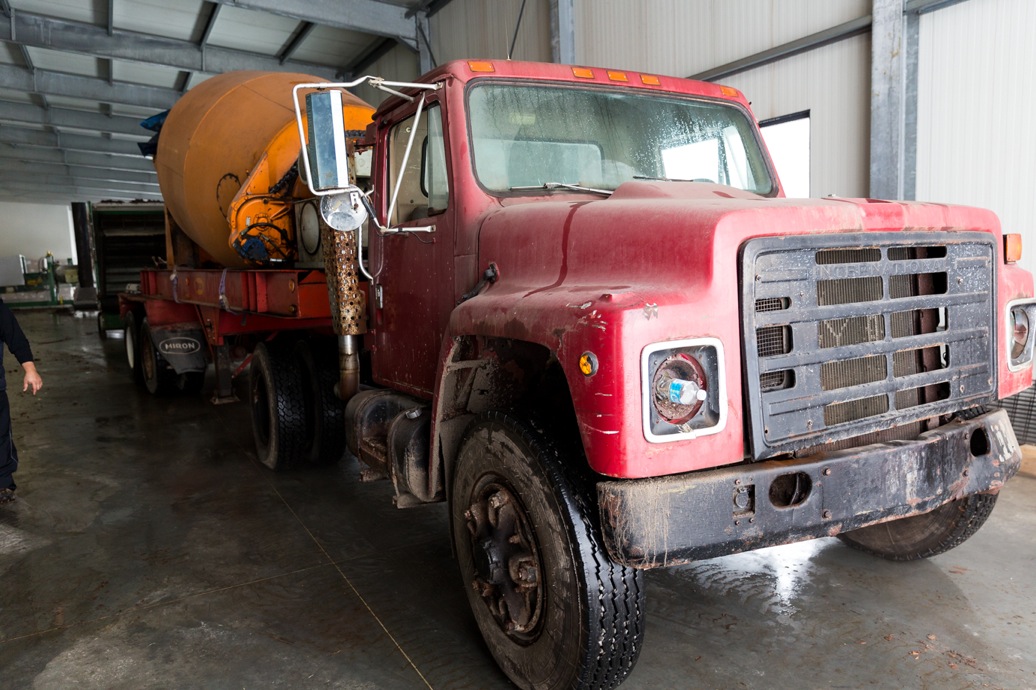
This is not a cement truck. Remember, mushrooms are finicky. Compost isn’t good enough for them, they need soil too, good rich soil.
As with everything they do, Carleton Mushroom does this themselves. Peat moss, black peat, sugar beet, lime and water are all blended in this truck before being layered over the compost containing the mycelium.
Super clean rooms and beds...
(No, not an ad for a roadside motel.) Before the seeded compost can be laid down in the grow beds, the entire room has to be steam sterilized. Only then can the seeded compost be taken in and covered with a two-inch layer of soil.
After just one day in the beds, the mycelium starts working its way up and through.
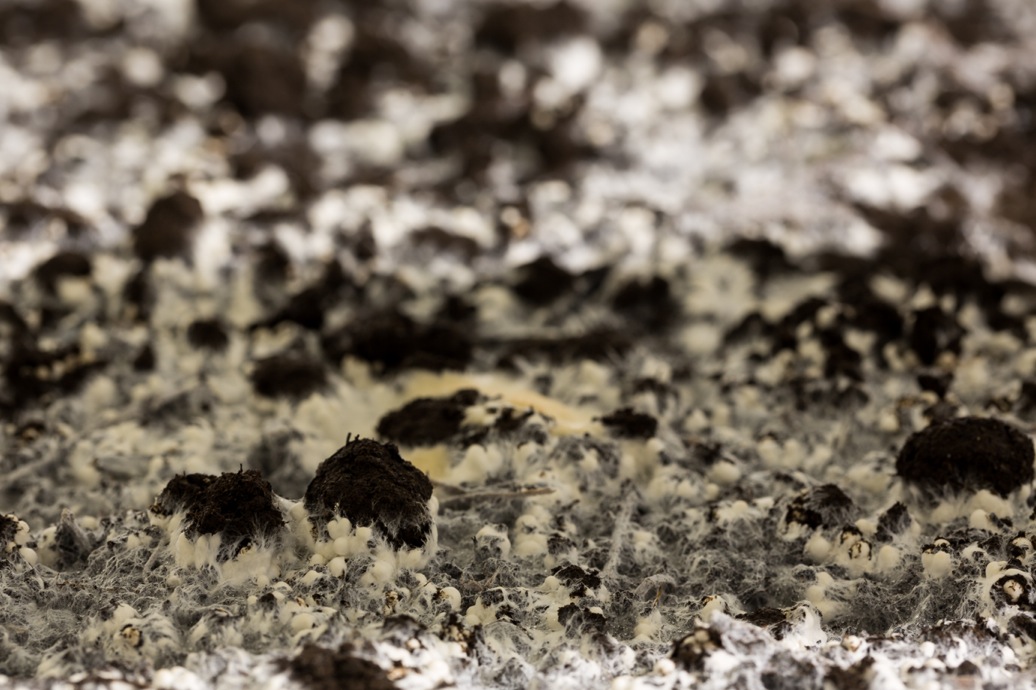
After seven days, the mycelium completely takes over the bed, and the mushrooms start to pin.
Only 15 days later, they’re ready for harvest.
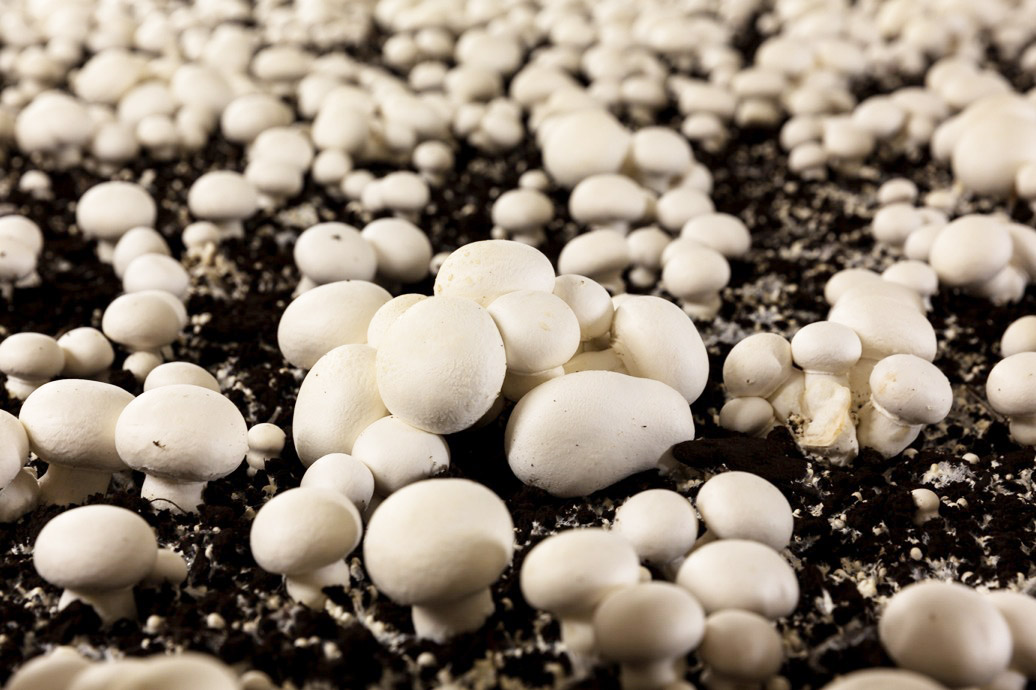
At Carleton Mushroom, six of these rooms are filled and emptied each week!
Bacterial blotch, air control, and other challenges.
“Mushrooms are very sensitive. If it’s cold, it’s not happening. If it’s hot, it’s not happening.” Temperature, airflow, and humidity have to be controlled at all times.
Mike explains that other facilities have problems maintaining this precarious balance because they take the outside air, bring it in, try to fight it, and then put it in the room. So everything’s always in flux. Mushrooms don’t like that. Steady is more their way.
So Carleton Mushroom has a system that recycles and scrubs the air from the grow rooms, and recirculates it. Each room has its own! That way, there’s less adjustment needed, the levels are always right, and the growing conditions are easier to control.
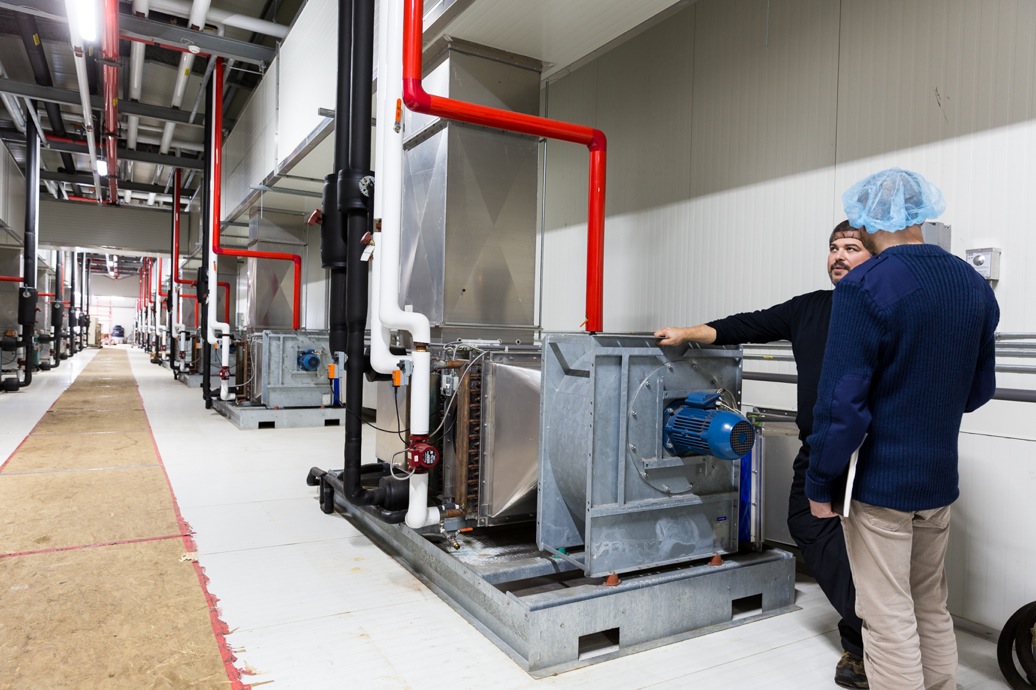
“A few farms copied our system, but my dad started it 15 years ago. The more you control the temperature, the better the mushroom, the longer it will last. Every time there’s a heat wave, two weeks later, there’s a shortage of mushrooms, always. We don’t get that.”
What happens if you don’t control all these parameters? Well, did you ever buy mushrooms at the store only to get home and realize that they have pinkish blotches on their skin?
“If a mushroom stays wet, it turns red, red spots, that’s bacterial blotch, that happens to farms who can’t control their air. And if it’s too dry, it’ll scale and peel.”
Everything has to be controlled and perfect every step of the way or the mushrooms don’t get what they need.
“You have to be on top of it everyday. That’s why we’re working six, seven days a week. You gotta be on the ball basically all the time, with your finger on the pulse. It’s tough but we enjoy it. There's other rewards too, you know, we’re building something for the next generation.”
Mike hopes his nephews and nieces will keep up the family tradition.
White agaricus, cremini & portobello?
Well yes and no. Carleton Mushroom grow three types of mushrooms, but not three varieties…
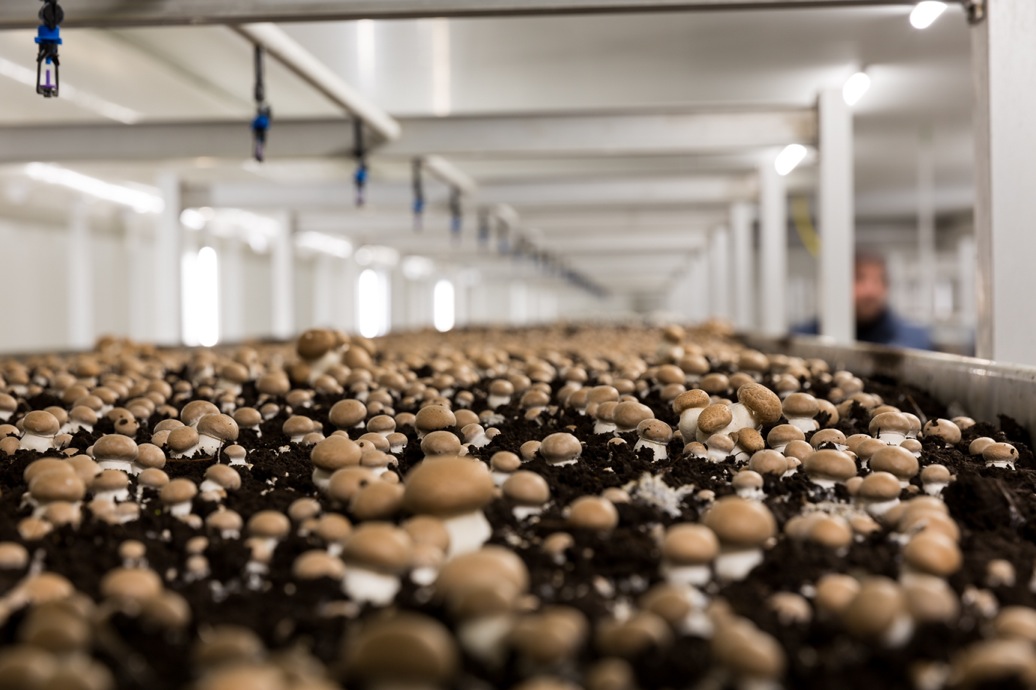
...portobellos are just overripe cremini (or browns). The ones below will become portobellos in about three days.
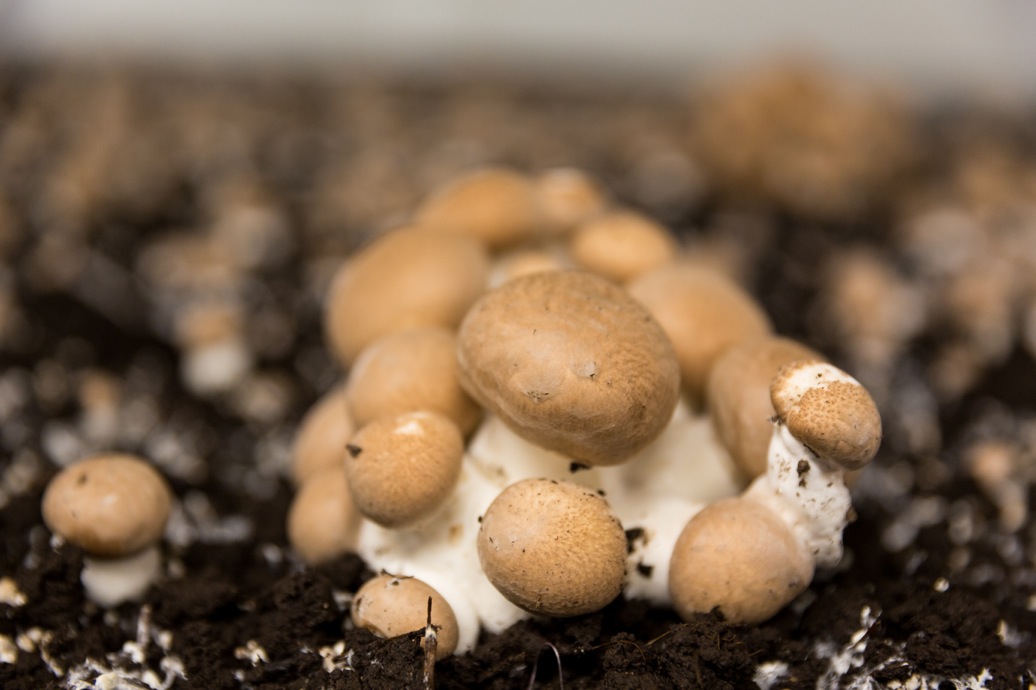
And like Mike says: “With mushrooms, the more ripe, the more flavour.”
“A good harvester is important.”
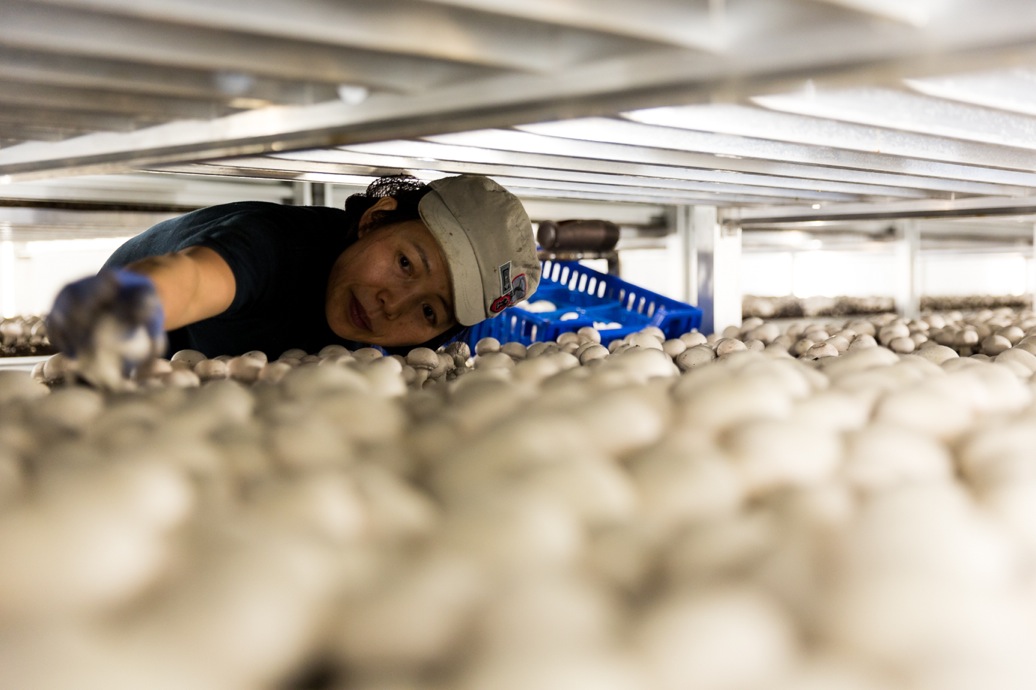
On harvest day, things really get moving, and good harvesters make all the difference.
“It’s important to pick the mushrooms fast but without taking too much soil and mycelium, or else it leaves a hole and nothing grows out of there again, that means less yields.”
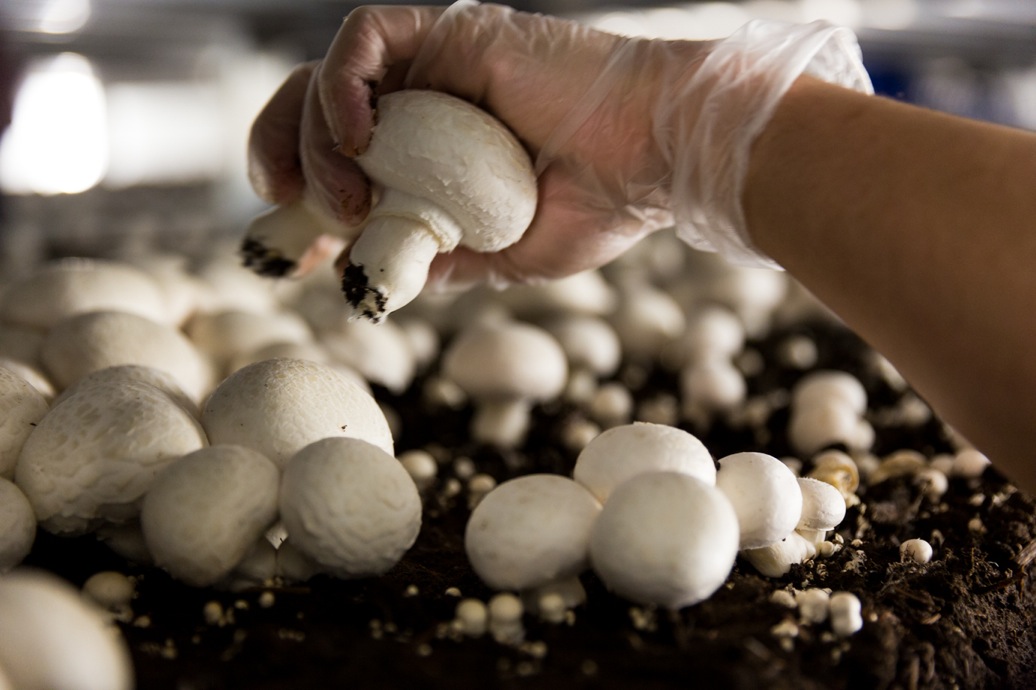
So the harvesters have to do graze picking. They don’t pick all at once, they stagger, picking only the ones that are ready, making room for the mushrooms that’ll be big enough the next day. They do that for about four days, the mushrooms just keep coming out of the mycelium.
“After that you get in-betweeners, or stragglers. These are very hard mushrooms. We use these for our sliced mushrooms.”
Then there’s a second break, and the harvesters can keep going in the same grow room for another four to five days. After picking, the mushrooms make their way to the packing area, again, impeccably clean.
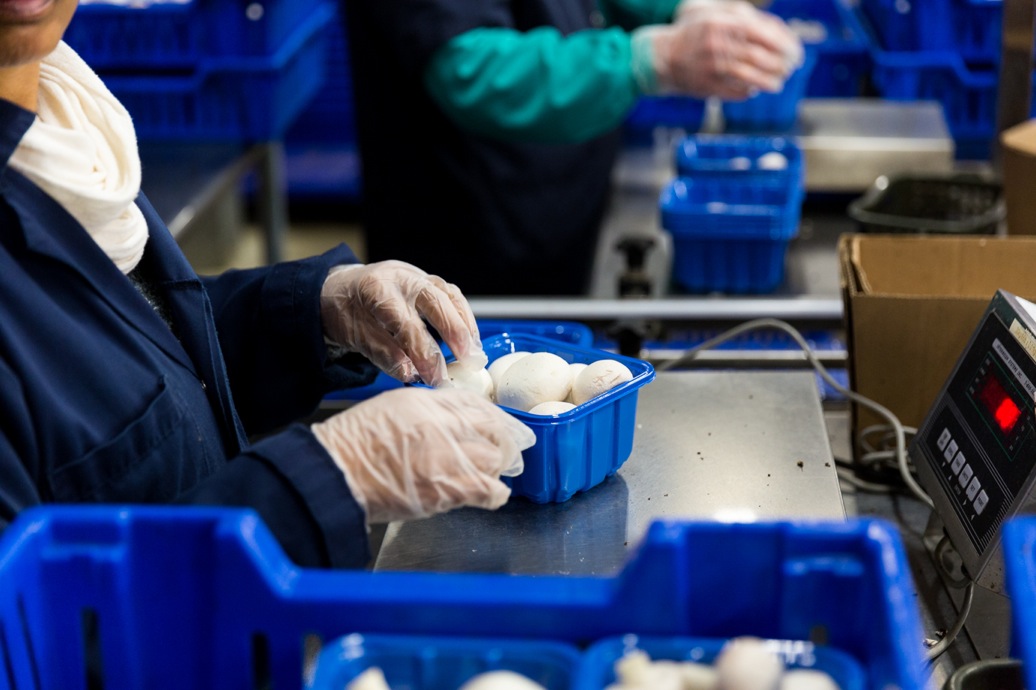
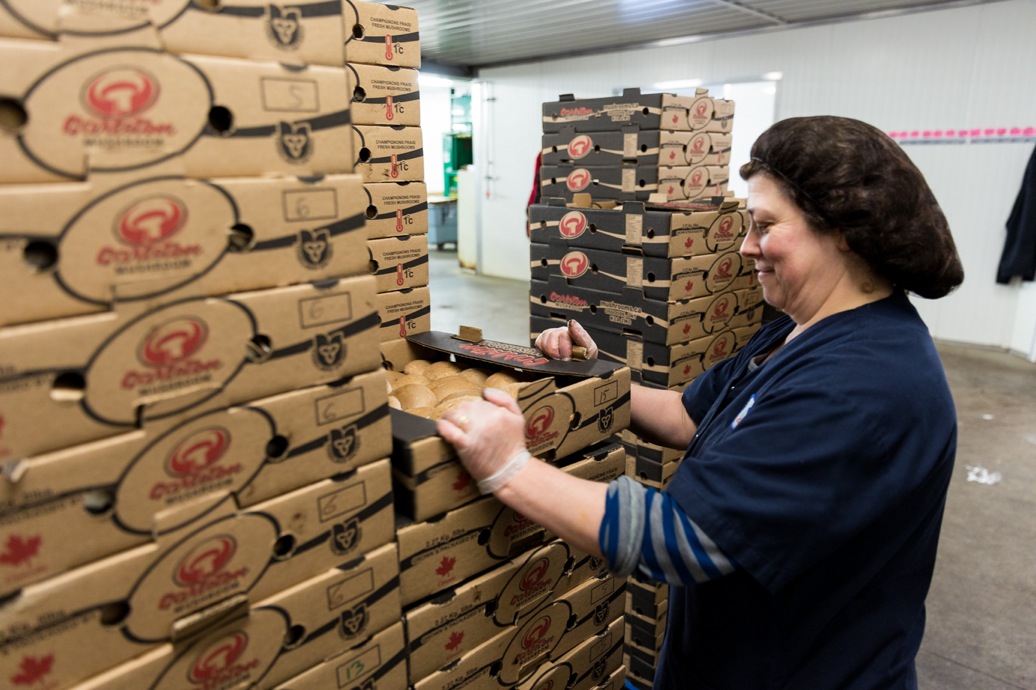
But there’s one important last step to the process before packing. If they’re not cooled down, the mushrooms just keep growing in the package. So they’re vacuum cooled to 2°C before being weighed and packaged.
“We harvest, pack and ship on the same day.”
50 days.
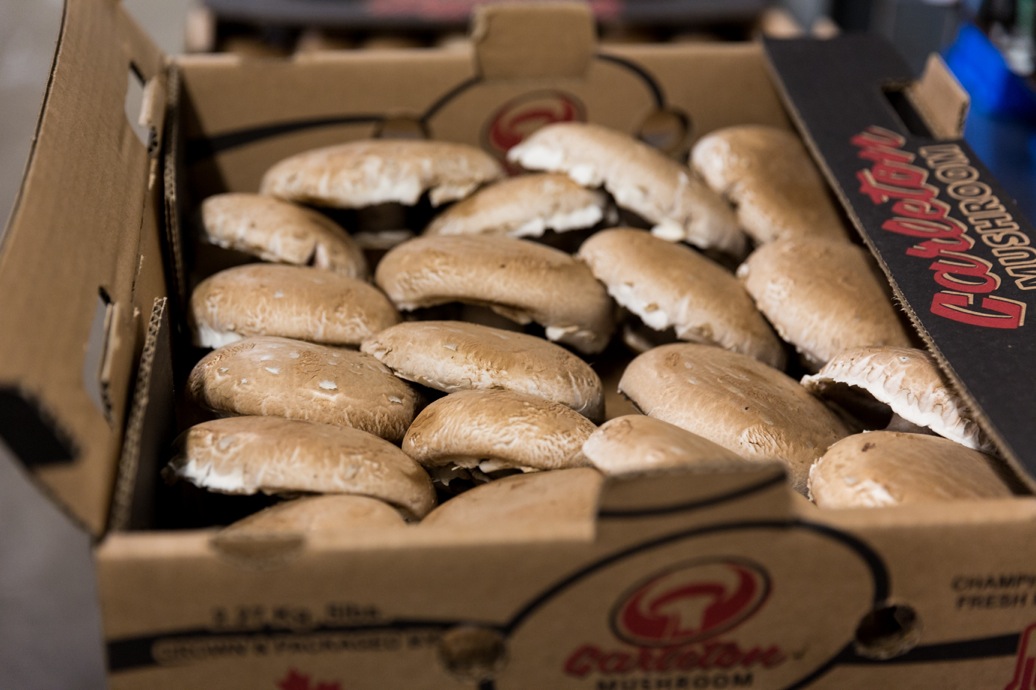
The whole process, from compost to harvest, takes 50 days, and it’s a true work of passion from start to finish. You can really feel and taste the difference. They’re firm, they taste like they should, and they keep well. Carleton Mushroom’s whites, browns and portobellos are excellent.
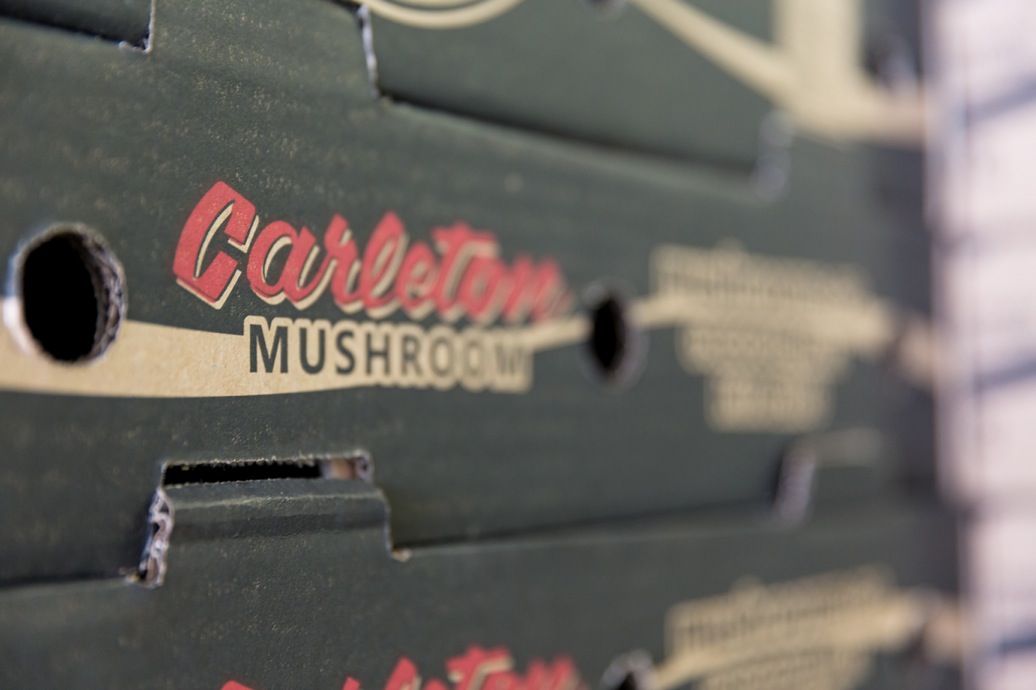
And Mike is our kind of guy. Lufa Farms is always looking for people who share our vision, for farmers who care about doing great things, and who produce great food in a responsible way. We think it’s important that Lufavores know their farmers, where their food comes from, and how it’s made. Hence this tale of Mike and the mushrooms.
Bon appétit!
